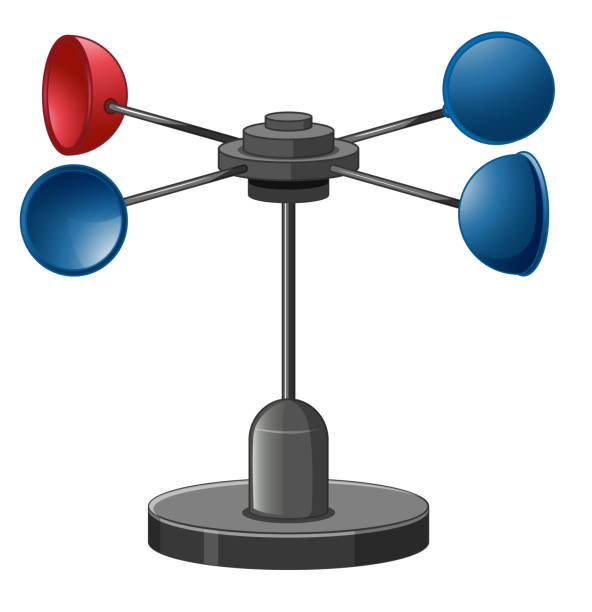Top Attributes to Look for in an Effective Anemometer for Accurate Wind Measurement
Top Attributes to Look for in an Effective Anemometer for Accurate Wind Measurement
Blog Article
Checking Out the Functions and Advantages of Anemometers for Climate Lovers and Professionals
Anemometers stand as crucial devices in the realm of climate tracking, catering to both lovers and experienced experts alike. These devices use a window right into the vibrant globe of wind patterns and rates, supplying indispensable data for meteorological evaluation and forecasting. From cup anemometers to sonic anemometers, each type brings its unique set of benefits and applications, losing light on numerous elements of weather. As we look into the features and benefits of anemometers, a deeper understanding arises not just of prevailing weather phenomena yet additionally of the wider ramifications for industries like wind energy manufacturing and ecological research study.
Value of Anemometers in Weather Condition Monitoring
Anemometers play an important duty in weather tracking by supplying exact measurements of wind speed, helping in projecting and understanding climate patterns. These instruments, ranging from conventional mug anemometers to modern-day ultrasonic anemometers, are essential for meteorologists, researchers, and weather lovers alike.

Kinds Of Anemometers and Their Applications
The most usual types of anemometers consist of mug anemometers, vane anemometers, hot-wire anemometers, and ultrasonic anemometers. Cup anemometers are composed of three or four mugs installed on straight arms that turn with the wind, determining its speed. Vane anemometers, on the other hand, utilize a freely revolving vane to line up with the wind instructions, supplying both wind speed and instructions measurements.
Cup anemometers are durable and ideal for general weather condition surveillance, while vane anemometers are favored for directional measurements. Ultrasonic anemometers are non-intrusive and use high accuracy, frequently utilized in study and specialized climate monitoring applications.
Advantages of Utilizing Anemometers in Projecting
In weather forecasting, the application of anemometers supplies important advantages for enhancing the accuracy of weather forecasting. Anemometers measure wind rate and instructions, giving critical information for forecasting climate patterns. By including wind information right into forecasting models, meteorologists can better understand the activity of climate systems, expect modifications in atmospheric conditions, and concern extra specific forecasts.
Furthermore, anemometers play an important role in analyzing possible weather condition risks. Keeping track of wind speeds aids forecasters anticipate severe climate occasions such as typhoons, tornadoes, and winter months storms with greater precision. This early caution system allows authorities to provide prompt informs and execute necessary precaution, reducing the threats to life and building.
Furthermore, anemometers assist in maximizing sustainable power production. By assessing wind patterns, meteorologists can determine ideal places for wind ranches and predict power output, adding to the efficient generation of wind power.

Anemometers in Wind Power Manufacturing
Given the important role anemometers play in offering exact wind information for weather forecasting and danger assessment, their importance encompasses the realm of wind power production. Anemometers are crucial tools in the field of wind energy, where the measurement of wind speed and direction is essential for identifying the feasibility and efficiency of wind generator setups. By properly gauging wind speeds at varying heights, anemometers help maximize the positioning and layout of wind turbines to maximize energy outcome.
In wind farms, anemometers are strategically placed to gather real-time wind data that is utilized to evaluate the prospective energy production of a site. This data contributes in figuring out the financial feasibility of wind power jobs and in forecasting energy generation to ensure grid stability. my company Additionally, anemometers help in checking wind problems to maximize wind turbine performance, avoid damage from high winds, and ensure the safety and security of employees functioning in the area of wind turbines.
Enhancing Weather Understanding With Anemometers

Anemometers play a key role in enhancing our understanding of microclimates. These localized climate my review here condition can vary considerably from wider regional projections, making it necessary to have accurate data for specific locations. anemometer. By purposefully positioning anemometers in numerous areas, scientists can gather comprehensive information on how wind acts in various surfaces, metropolitan atmospheres, or bodies of water
Furthermore, anemometers add to boosting climate projecting models by providing real-time information on wind actions. This info is especially valuable for predicting extreme weather condition events, optimizing farming methods, and sustaining industries like air travel and maritime navigating. In general, anemometers are indispensable instruments that allow us to dig deeper right into the complexities of weather systems, inevitably causing more exact predictions and better-informed choices.
Conclusion
In verdict, anemometers play an essential function in climate monitoring and projecting by measuring wind speed and instructions. Anemometers additionally have applications in wind energy production, additional highlighting their value in both meteorology and sustainable power fields.
From cup anemometers to sonic anemometers, each type brings its special collection of benefits and applications, shedding light on various elements of climatic problems. These tools, varying from traditional cup anemometers to contemporary ultrasonic anemometers, are necessary for meteorologists, scientists, and weather enthusiasts alike. The most common types of anemometers include cup anemometers, vane anemometers, hot-wire anemometers, and ultrasonic anemometers. Cup anemometers are ideal and durable for basic climate monitoring, while vane anemometers are favored for directional measurements. Anemometers are essential instruments in the field of wind energy, where the measurement of wind speed and direction is essential for identifying the expediency and effectiveness of wind generator installments.
Report this page